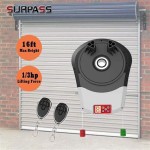Two-Car Garage House Plans: An In-Depth Exploration
The integration of a two-car garage into a house plan represents a significant decision, influencing not only the practical aspects of vehicle storage and protection but also the overall architectural design and property value. Understanding the nuances of two-car garage house plans is crucial for homeowners, builders, and architects alike. This article will explore the various considerations, benefits, and design possibilities associated with incorporating a two-car garage into a residential property.
Benefits and Considerations of a Two-Car Garage
Choosing to include a two-car garage in a house plan offers numerous advantages. The most obvious is the capacity to shelter two vehicles from the elements, preventing weather-related damage and reducing the need for exterior vehicle maintenance, such as washing and waxing. Beyond vehicle protection, a two-car garage provides substantial storage space. This space can be utilized for tools, gardening equipment, seasonal decorations, and other items that might otherwise clutter the living areas of the house. The garage can also be adapted for use as a workshop, hobby area, or even a home gym, depending on its size and configuration.
However, incorporating a two-car garage also involves certain considerations. The size of the garage will impact the overall footprint of the house, potentially requiring a larger lot size. Building codes and zoning regulations often dictate the minimum and maximum dimensions for garages, as well as their placement on the property. Furthermore, the aesthetic design of the garage should complement the overall architectural style of the house. A poorly designed garage can detract from the curb appeal of the property and potentially reduce its value.
Cost is another significant factor. The addition of a two-car garage adds considerably to the overall construction budget. This includes the cost of materials, labor, foundation work, and the installation of garage doors and operating mechanisms. Homeowners should carefully weigh the benefits of a two-car garage against the associated costs to determine whether it aligns with their budget and needs.
Design Configurations and Architectural Styles
Two-car garages can be integrated into house plans in various configurations, each offering unique advantages and disadvantages. The most common is the attached garage, which is directly connected to the house. This design allows for convenient access to the house from the garage, especially during inclement weather. Attached garages can be located at the front, side, or rear of the house, depending on the architectural style and lot layout.
Another popular configuration is the detached garage, which stands separate from the main house. Detached garages offer greater flexibility in terms of placement and design. They can be located further away from the house, providing more privacy and reducing noise transmission. Detached garages can also be designed to complement the architectural style of the house while maintaining a distinct identity. This option can be particularly appealing for homeowners who desire a more traditional or rural aesthetic.
A variation of the attached garage is the integral garage, which is incorporated directly into the main structure of the house, often beneath living spaces. This design is common in split-level homes or houses built on sloping lots. Integral garages can save space on smaller lots and provide direct access to the house. However, they may also require more complex structural engineering and insulation to minimize noise and temperature fluctuations in the living areas above.
The architectural style of the house should also influence the design of the two-car garage. For example, a modern house might feature a sleek, minimalist garage with a flat roof and contemporary garage doors. A traditional house might opt for a garage with a pitched roof, clapboard siding, and carriage-style doors. The garage design should be cohesive with the overall aesthetic of the house to create a harmonious and visually appealing property.
Key Considerations for Garage Size and Functionality
The dimensions of a two-car garage are critical for ensuring adequate space for vehicles and storage. Standard two-car garages typically measure around 20 feet wide by 20 feet deep, providing enough room for two average-sized cars. However, larger vehicles, such as trucks or SUVs, may require a larger garage. It is advisable to add extra width and depth to the garage to allow for comfortable maneuvering and storage space along the walls.
The height of the garage ceiling is another important consideration. Standard garage ceilings are typically around 8 feet high, but higher ceilings can provide additional storage space above the vehicles and accommodate a car lift if desired. Higher ceilings also improve ventilation and make the garage feel more spacious.
Functionality is also key. The garage should be equipped with adequate lighting, both overhead and task lighting, to ensure visibility and safety. Electrical outlets are essential for powering tools, appliances, and charging electric vehicles. Proper insulation is crucial for maintaining a comfortable temperature in the garage, especially in colder climates. A well-insulated garage can also help to reduce energy consumption in the house.
Garage doors are a significant design element and should be chosen carefully. There are various types of garage doors available, including sectional doors, roll-up doors, and swing-out doors. Sectional doors are the most common and offer a balance of affordability, durability, and ease of use. Roll-up doors are ideal for garages with limited headroom, while swing-out doors provide a traditional look. The material of the garage door should also be considered, with options including steel, wood, aluminum, and fiberglass. Each material offers different advantages in terms of aesthetics, durability, and maintenance.
Finally, the orientation of the garage doors should be considered. Most garages have doors that face the street, but side-entry or rear-entry garages can offer greater privacy and improve curb appeal. The driveway leading to the garage should be wide enough to accommodate two vehicles and allow for easy maneuvering. Adequate drainage is also essential to prevent water from pooling around the garage entrance.
Incorporating a two-car garage into a house plan is a significant investment that can enhance the functionality, value, and aesthetic appeal of the property. Careful consideration of the various factors outlined in this article, including the benefits, design configurations, size, functionality, and architectural style, is essential for creating a two-car garage that meets the needs and preferences of the homeowner.

House Plan With 2 Car Garage

Contemporary 3 Bedroom House Plan With 2 Car Garage 80917pm Architectural Designs Plans

Modern 3 Bed House Plan With 2 Car Garage 80913pm Architectural Designs Plans

One Story Duplex House Plan With Two Car Garage By Bruinier Associates Plans Floor

House Plan With 2 Car Garage

Ranch Style With 3 Bed 2 Bath Car Garage House Plans Small

House Plan 6 Bedrooms 3 5 Bathrooms Garage 2641 V1 Drummond Plans

One Story House Plan 62309 With 2 Beds Baths Car Garage Level Plans New Ranch Style

House Plan 67319 Quality Plans From Ahmann Design

Two Car Garage With Workshop Liberty House Plans








